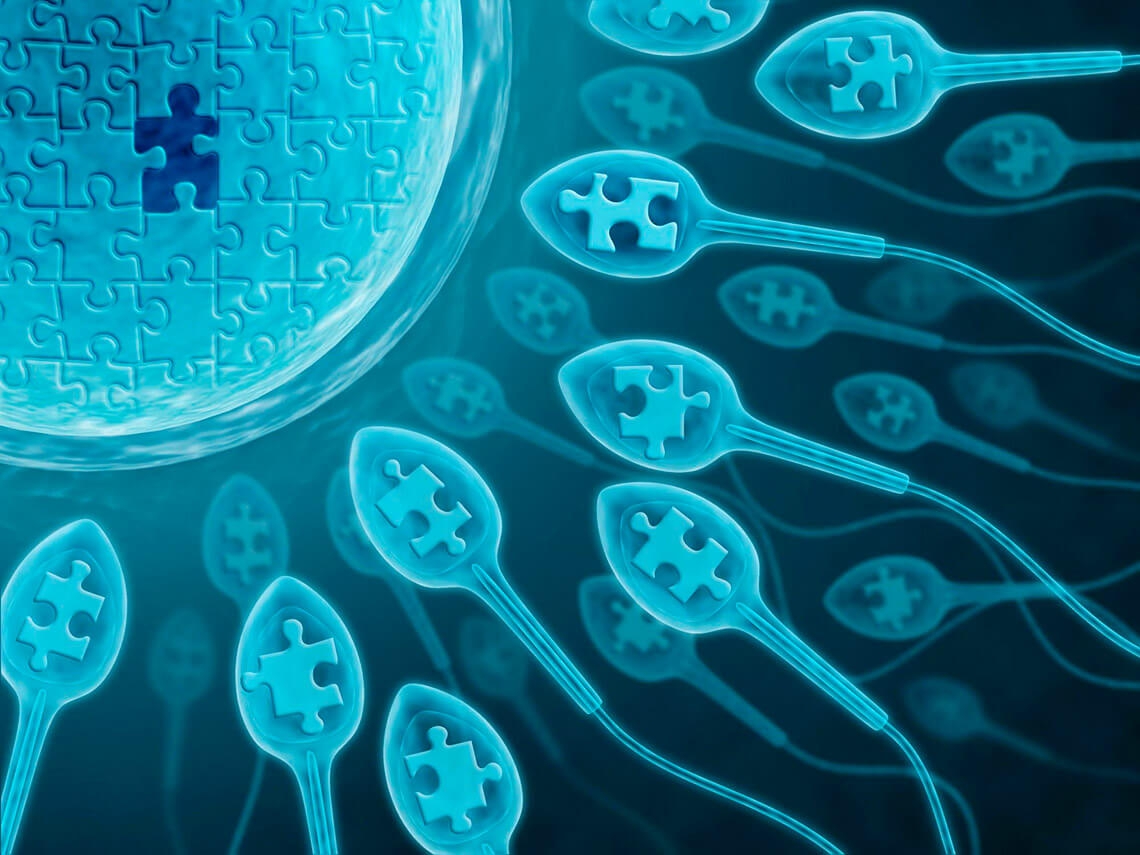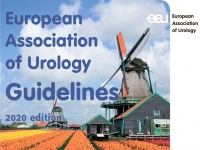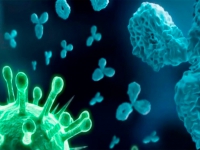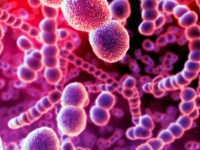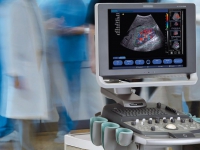Male infertility - is one of the key problems of andrology. On average, up to 20% of marriages are infertile. Male infertility takes up to 40 - 50% of the causes of infertile marriage.
MAIN CAUSES OF MALE INFERTILITY:
1. Nervous - mental factor (0.05%)
- severe mental trauma often leads to oligo- and azoospermia
- concussion
- acute and subacute neuroinfections
- spinal cord injury
- damage to the autonomic nervous system
- damage to n. ilioinguinal in hernia leads to testicular atrophy
- secondary neuroticism (17-37%)
2. Congenital and genetic causes (4-5%
- del Castillo syndrome
- klinefelter syndrome
- anorchism syndrome and other forms of congenital hypogonadism
3. Infectious toxic factor (8.5 to 36%)
- prostatitis 36%
- epidemic mumps; often complicated by acute orchitis in 15% - 18% of patients
- acute orchitis is observed (rarely) in typhoid, paratyphus, brucellosis, influenza, typhoid fever, malaria, tuberculosis, brucellosis, pneumonia, sepsis
- sexually transmitted (STIs) diseases caused by the following infection:
- chlamydia -40.5%
- ureaplasma -25.8%
- mycoplasma - 8.6%
- herpes 4.9%
- gardnerella 3.7%
- mixed chlamydia - ureaplasma infection 17%
- trichomoniasis as mono-infection 10.5%
- mixed trichomonas and bacterial infection 89.5%.
- herpes virus is introduced into the structure of sperm, affecting it.
4. Exogenous intoxication
- lead, mercury, manganese, phosphorus, carbon disulfide, ethylene, ammonia, benzene, granosan, organic peroxide, exhaust gases, cadmium, ethylene glycol, solvents, narcotic gases, nitrous oxide.
5. Medicines
- sulfanilamides, nitrofurans, kanamycin, streptomycin, tetracycline, macrolides, cephalosporins, penicillin K+ salt, trimethoprim, hormones (androgens, estrogens, cortisone, antiandrogens, testosterone in inadequate doses, chorionic gonadotropin in hypergonadotropic states), thiouracil, actinomycin D, cytostatic remedies
6. Habitual intoxication
- alcohol
- tobacco
- drugs
7. Alimentar factor
- malnutrition, partial or full-time fasting
- multivitamin deficiency (A, C, D, E, R, B)
- insufficiency of essential amino acids (arginine, tryptophan, lysine, methionine, leucine)
8. Ionizing radiation
- gamma radiation (temporary - 1 per year) - sterilizing dose - 250 Rg, irreversible infertility at 500Rg.
- X-ray - examination (protection of genitals)
- radioactive research
- exposure to high-frequency juices
9. Chemical mutagens often affect the genetic apparatus of spermatogenesis cells (may lead to chromosomal diseases in offspring).
10. Disruption of endocrine gland function (endocrinopathy): thyroid, epiphysis, pituitary gland, adrenal glands, pancreas.
11. Diseases of internal organs actively involved in the active metabolism of androgens:
- liver disease: hepatitis, cirrhosis
- kidney disease: chronic renal failure (CPN).
- lung disease: chronic pneumonia, bronchiectasis
- prostate diseases (prostatitis, prostatovesiculitis, prostate hyperplasia, less common cancer).
12. Effect of high and low temperatures:
- hot shops: bakers, foundries, firemen
- hot mud and ozokerite with prolonged exposure to Leidig a cell
- the local temperature increase is observed in varicocele, hernia, hydrocele ( accumulation of fluids around a testicle), cryptorchism (at the same time joins the violation of hemodynamics, mechanical pressure, autoimmune processes, hypoxia).
- exposure to low temperatures is also unfavorable.
13. Vascular disorders:
- ischemia, hypoxia is observed in the case of inguinal scrotal hernia, varicocele (up to 30-40%). 50% of patients with varicocele have a normal seminogram.
14. Injury:
- testicular injury leads to ischemia of its tissues from compression of hematoma of the testicular vessels. Then there is scarring and atrophy of the testicle, scarring of the seed-carrying pathways, autoimmune aspermia
- operations on the testicle shells or hernia can disrupt the hemodynamics of the organ, accidental ligation of the vascular or ejaculation duct, cause atrophy of the testicle.
15. Violations of the hematotesticular barrier contribute to:
- hypothermia, overheating, ischemia, injuries, common infectious diseases, STIs, and their complications such as prostatovesiculitis and epididymite, surgical interventions (hernia, vasectomy, vasovasostomy, orchidopexy), avitaminosis, fasting. Violation of the hematotesticular barrier leads to the formation of antibodies in the blood to the spermatogenic epithelium of the seminal tubules, causing autoimmune infertility.
16. Professional harms:
- motor drivers
- work in chemical plants
- working in microwave conditions
A combination of 2 or more infertility factors is detected up to 30% of cases.
The success of infertility therapy in marriage depends on the thoroughness of the examination of both spouses and the accuracy of the diagnosis. To find out the causes of infertility, spouses must visit a doctor at least 5-6 times, and the examination takes from 3 months to several years. In unidentified factors, pathozoospermia is classified as idiopathic (unexplained).
CLASSIFICATION MALE INFERTILITY
Secretoral infertility (hypogonadism)
In secretory infertility, the hormonal factor plays a leading pathogenetic role. To solve the question of treatment tactics, differential diagnosis is needed between testicular (characterized by high levels of FSG) and obturation (characterized by normal levels of FSG and T) aspermiya
1. First hypergonadotrop hypogonadism:
A. Congenital
B. Acquired
2. The second hypogogonatrop hypogonadism:
A. Congenital
B. Acquired
Excretory - toxic infertility (eti)
Three interconnected pathogenetic factors are involved in the pathogenesis of pathospermia in ETI:
- Infectious– toxic factor (on the basis of preceding specific or non-specific inflammatory or other intoxication of the appendages of the sex glands and ejacuular tracts, such as chronic prostatovesiculitis, uretroprostatitis, uretroproatatovesiculitis with a typical clinic for each disease). Pathognomonic for excretor-toxic infertility is asthenosospermia (violation of mobility), piospermia (leukocytospermia), spermglutination, the presence of mucus, bacteria, sperm aggregation, an increase in the number of sperm with defects, in particular the tail. In a long-term inflammatory process, correlational changes in the functioning of The G-G system and oligozoospermia of various degrees are joined:
- Excretory obstructive factor (with the obturation of the seed-bearing pathways of congenital or acquired genesis, congenital underdevelopment appendages of the testicle or seed-carrying pathways, other malformations (hypo- and epispadias).Diagnosis of excretor-obstructive infertility is based on the presence of aspermia, on history data (suffered by differentitis, epididymitis bilateral) and palpal to detect signs of chronic inflammation of the appendage of the testicle or its absence during palpation of the seed rope (aplasia)
- immunological
- hormonal
Combined infertility
The most complex form of male infertility, based on a combination of secretory-endocrine factor, caused by a form of congenital or acquired hypogonadism, and excretory factor. One of the factors prevails in the clinical picture, each of which aggravates the reproductive function of the patient. Combined infertility is accompanied by a pronounced androgenic insufficiency, detected clinically and laboratoryly, by severe degrees of oligozoospermia up to aspermia, immunological disorders. Combined infertility proceeds:
- with the prevailing secretory component
- with the precipation of the excretor component
Immunological infertility
The frequency of immunological infertility reaches 10-15%. Very often such couples are diagnosed with "infertility of unclear genesis."
Diagnosis is based on the detection in the serum of spouses, ejaculate, cervical mucus antisperm, spermimmobilizing, spermagglutinating, spermoly-tic antibodies. The mechanism of influence of antisperm antibodies on reproductive function is manifested as follows:
- Spermatogenesis disorder leading to oligo, terato, and azoospermia
- Reducing and/or suppressing sperm motility:
- agglutination in semen
- disruption of migration through the cervix channel, uterus itself and fallopian tubes
- destruction of sperm in the genitals of a woman through the influence of activated complement
- Suppression of the process of interaction of gamets:
- capacitation and acrosomal reaction
- binding and penetration
- binding sperm with oolemma
- fusion of pronuclears
- Tube - peritoneal factor:
- presence of antisperm antibodes in fallopian tubes
- the presence of antybodies in peritoneal fluid
- violations of the peristalsis of fallopian tubes
- Blocking the embryo implantation process
Factors that stimulate the immune response in women are:- STIs (trichomoniasis, gonorrhoea, chlamydia, mycoureaplasmosis, genital herpes)
- vaginitis, cervicitis, endometriosis, salpingoophoritis
- genital endometriosis
- weighed down by an allergological history.
Biological work:
Sperm compatibility test (Shuvarsky-Gunner) (Sims-Guner) - postcoital test (PCT). In a negative sample of Shuvarsky-Gunner, Kurtzrock-Miller's sample is carried out. In a negative trial of Kurtzrock-Miller, a sample is carried out on Buvo and Palmer.
Clinical methods of diagnostics:
- collection of history (primary survey), examination, palpation
- general medical examination
- examination of the genitourinary system
Laboratory diagnostic methods:
- spermogram (subject to normospermia - once, with patozoospermia - 2-3 times during the month).
- definition of antisperm antibodies (MAR - test), assessment of acrosomal reaction of sper
- cytological study of the secret of the prostate gland and seminal vesicles (indirect signs of the presence of STIs and prostatitis is an increase in the number of white blood cells secretly more than 10 in p/ vision, in semen more than 5 in p/vision (or more than 1.0 x 10 6/ml), increase in pH, the presence of trichomonas and /or diplococci, mucus, viscosity of sperm more than 1-2 cm, increase in sperm thinnertime, sperm agglutination, changes in the content of lemon acid, zinc, fructose.
- sperm sowing on trichomoniasis (Tr. vaginalis) (In Pouch TV, VioMed Diognostics, Inc., USA).
- after treatment of trichomonias, sperm seeding on gonorrheae (N.gonorrhoeae) (In. Tray GC, BioMed Diagnostics, Inc., USA).
- study on chlamydia, myco-plasmosis, CMV infection, HPV) pcr, LCR, IFA, RIF. Diagnosis of STIs includes a complex consisting of studying the patient's complaints, history of life and disease, figuring out the number of sexual partners with unprotected sex.
- ultrasound of pelvic organs and scrotum organs (including using dopplerography)
Varicocele - prevalence in the population - 10-16%. The cause of infertility is in 14.9% of cases.
Mechanism of pathological effects of varicocele on spermatogenesis:
- venous stagnation reduces perfusion of the testicle and promotes its ischemia and hypoxia
- the temperature of the testicle is disturbed
- vasoactive substances (norepinephrine) enter the testicle and spasm of blood vessels and ischemia of the organ
- extended veins mechanically compress the testicle and ejaculate pathways, which is manifested by a decrease in testicular volume
- in conditions of venous stagnation the function of Certoli cells is disrupted, atrophy of the seminal tubules develops
- damage to the hematotesticular barrier creates conditions for the development of an autoimmune process and the emergence of autoimmune infertility
- ultrasound of the thyroid gland, adrenal glands
- hormonal screening: FSH, LG, Testosterone (general and free), Prolactin (PRL), Estradil (E2), TSH, T3 (swab), T4 (swab), AT to thyroglobulin and microsomal fraction of tyrocytes.
- medico - genetic research.The indications for medical - genetic examination are oligo, terato, azoospermia and their combination. They examine the blood, ejaculate, and/or egg bioptate. Chromosomal pathology in men is detected in 4-13% of cases.
- X-ray methods and CT (MRI) of abdominal, pelvic and skull organs (according to indications).
- testicular biopsy. This study is considered to be the final one; it is performed in idiopathic azoospermia. Apply closed (puncture, cranking) and open (more informative) versions of biopsy.
Prunciples of treatment of excretory - toxic infertility (eti):
1 Stage: 1-2 courses of complex anti-inflammatory treatment of chronic urethritis, prostatitis, vesiculitis, epididymiitis, orchitis, differentitis - diseases and STIs, which caused pathospermia before the phase of long-term remission.
2 Stage: Stimulation of sperm motility. The effectiveness of treatment is on average 70-80%. In the if it is ineffective - intrauterine insemination of the husband's sperm (IUI), when its inefficiency - the use of assisted reproductive technologies (ART).
The principle of treatment excretory – obstructive infertility:
1 Stage: Comprehensive anti-inflammatory therapy
2 Stage: plastic surgery on the seed-carrying pathways.
Congenital agenesis is recommended by the donor's sperm, in the case of the preservation of spermatogenesis - ART (ICSI) provided that the wife has ovulation. In unfavorable conditions - adoption of a child.
SECRETORY INFERTILITY - hormone therapy.
WHEN COMBINED INFERTILITY - treatment is prescribed depending on the secretory or excretory - toxic component.
In the treatment of immunological infertility:
1 Stage - desensitizing therapy
2 Stage - IUI of husband's sperm
3 Stage - in the absence of effect - the use of ART.



